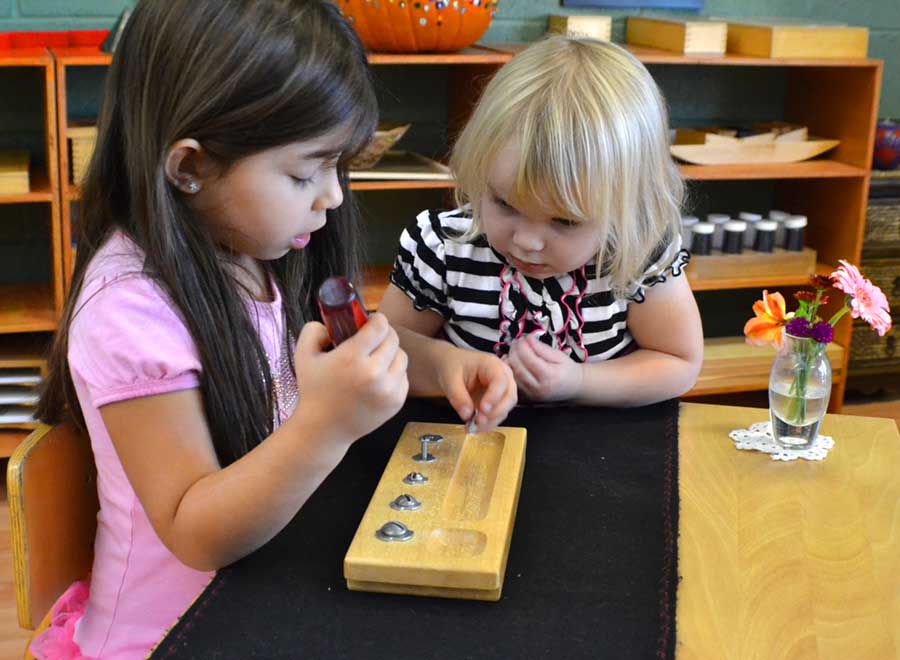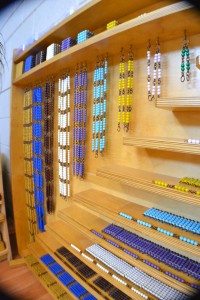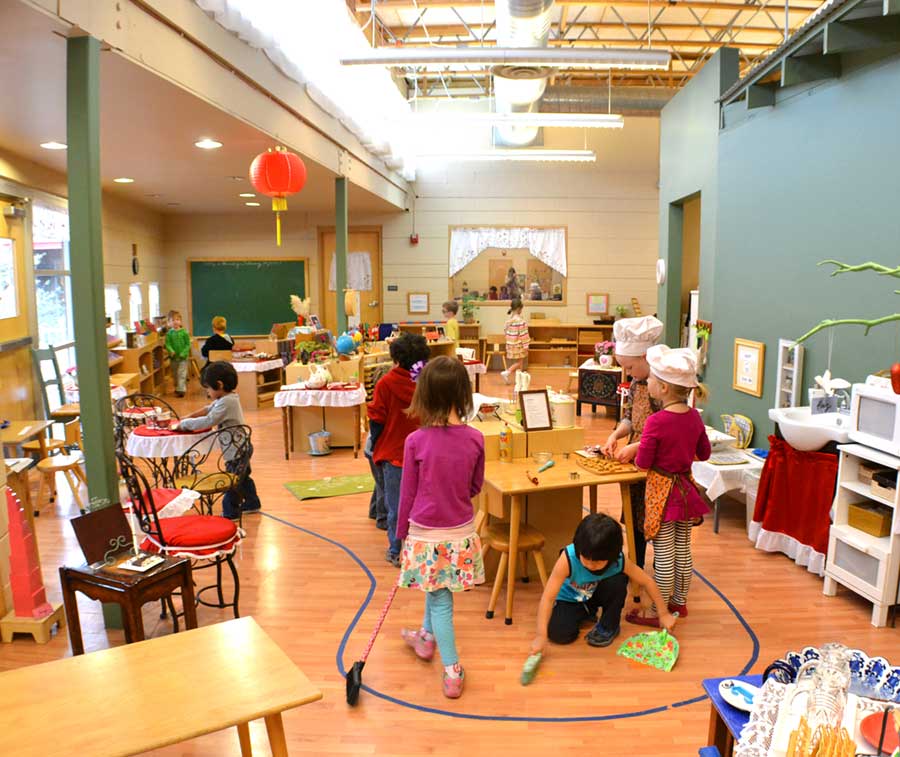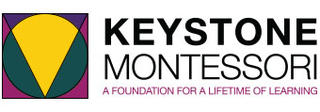The Multi-Age Classroom
 From the age of three on, Montessori students are in multi-age classrooms. They remain in the same classroom for three years, moving from being the youngest to the oldest in their classroom community. This approach is beneficial for students in a variety of ways. Older students act as teachers, showing younger children how to do things, which reinforces their own learning. Younger peers are often motivated to learn by seeing what others can accomplish. They also can learn from observing those who are just ahead of them in skills. Another benefit is that children can progress at their own pace without grade level stigma and can take on challenges they are ready for without having to wait until the next school year.
From the age of three on, Montessori students are in multi-age classrooms. They remain in the same classroom for three years, moving from being the youngest to the oldest in their classroom community. This approach is beneficial for students in a variety of ways. Older students act as teachers, showing younger children how to do things, which reinforces their own learning. Younger peers are often motivated to learn by seeing what others can accomplish. They also can learn from observing those who are just ahead of them in skills. Another benefit is that children can progress at their own pace without grade level stigma and can take on challenges they are ready for without having to wait until the next school year.
Over the three-year period, the teacher is able to observe and support each individual child’s growth. This intimate knowledge of the child allows the teacher to individualize instruction by offering the child opportunities to accelerate or deepen learning in areas of special interest. The familiarity of a stable environment supports risk-taking, which is essential for learning to occur.
The basis for the multi-age classroom is Montessori’s observation-based theory of human development.
Montessori Materials
 Montessori students often refer to the “work” they are doing, by which they mean a particular Montessori material. These materials are designed to be “self-teaching,” in that a child who is taught to use them can learn from them without having a teacher present to verify whether the lesson has been completed correctly. The material itself has “control of error,” which may mean, for example, that it only fits together in a particular way.
Montessori students often refer to the “work” they are doing, by which they mean a particular Montessori material. These materials are designed to be “self-teaching,” in that a child who is taught to use them can learn from them without having a teacher present to verify whether the lesson has been completed correctly. The material itself has “control of error,” which may mean, for example, that it only fits together in a particular way.
Montessori materials are designed to teach abstract concepts through hands-on activities. Sandpaper letters are an example from the Early Childhood language curriculum: students trace their fingers along a letter made of sandpaper and the physical movement and texture create a muscle memory of the letter’s shape. A child is thus able to recognize letters well before he or she has the fine motor ability to hold a pencil. In the math curriculum, students use beads to count and do math problems. They can easily grasp the concept of subtraction, for example, because they are literally taking away a certain number of beads.
Montessori materials are sequential. Each work prepares the child for the one after it, which adds to their learning. Materials also have depth, in that they can be used to teach a variety of concepts. A good example of this is the binomial cube, a cube composed of 8 wooden blocks which fit together in a binomial pattern, representing the cube of two numbers, (a + b). This work is first used as a three-dimensional puzzle to help the child learn to recognize patterns. Later, students use it to physically represent the algebraic equation (a+b)3. New ideas can be introduced through the use of familiar works as children mature, which makes learning feel like a natural unfolding rather than a series of unconnected concepts.
The Planes of Human Development
The transformation of children from birth to adulthood occurs through a series of developmental planes. Montessori practice changes in scope and manner to embrace the child’s changing characteristics and interests. In the first plane from birth to age six, the child is characterized by his or her ‘absorbent mind’, absorbing all aspects of his or her environment, language and culture. This plane is characterized by ‘sensitive periods’ during which learning is easier or faster. In the second plane from age six to twelve, the child uses a ‘reasoning mind’ to explore the world with imagination and abstract thought. In the third plane from twelve to eighteen, the adolescent has a ‘humanistic mind’ eager to understand humanity and the contribution he or she can make to society. In the last plane of development from age eighteen to twenty four, the adult explores the world with a ‘specialist mind’ taking his or her place in the world. Maria Montessori believed that if education followed the natural development of the child, then society would gradually move to a higher level of co-operation, peace and harmony.

The Prepared Environment
 Montessori classrooms are typically sunny, inviting spaces with beautiful wood furniture, lots of plants, fish tanks or animal cages, musical instruments, and art objects. Teachers give special attention to creating a safe, well-ordered, aesthetically pleasing , developmentally appropriate environment that will support children’s independence and challenge their intellectual, social, and emotional growth.
Montessori classrooms are typically sunny, inviting spaces with beautiful wood furniture, lots of plants, fish tanks or animal cages, musical instruments, and art objects. Teachers give special attention to creating a safe, well-ordered, aesthetically pleasing , developmentally appropriate environment that will support children’s independence and challenge their intellectual, social, and emotional growth.
Montessori classrooms provide a prepared environment where children are encouraged in their natural tendency to purposeful action. Children’s innate passion for learning is encouraged by giving them opportunities to engage in spontaneous, purposeful activities with an adult guide. The classroom is paradoxically both a busy space in which children are actively engaged in activities and a calm, serene space that allows them time for reflection.
Each classroom is organized so that learning materials are grouped in distinct subject areas, typically arranged on shelves in order of their complexity. Children are free to move about the classroom selecting materials to work on, using the bathroom as needed, taking time out to prepare themselves a snack, mopping up spills as they occur, only asking teachers or peers for assistance when they feel they need it. Children feel that a Montessori classroom is, in the truest sense, their room—it is a child-sized, child-centered learning community that they help to maintain. Their efforts to share the space in respectful ways promote social and emotional learning.
The Role of the Teacher
We tend to think of a teacher as presenting lessons to an entire class of students at once while standing at the front of the room. Montessori teachers operate very differently. Their role is to observe each child and present individual lessons when the child is ready for them. They spend their time moving quietly about the classroom observing the class at work, helping a child choose something to work on, presenting a lesson to one or two children at a time, answering questions, and posing provocative questions that promote learning. They don’t to have to spend much time managing classroom behavior because the children are actively absorbed in doing activities they themselves have selected. Students in a Montessori classroom tend not to act out due to restlessness or boredom because they are busy concentrating on their work. The teacher controls the environment, not the children. A Montessori teacher is a guide, mentor and friend.

